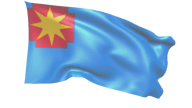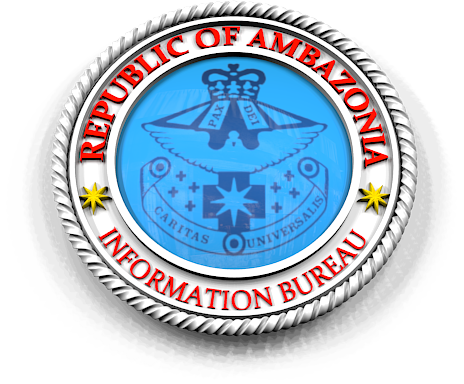In 1991, The U.S-Ambazonian dialogue held its first meeting under the Chairmanship of the African Affairs Assistant under Secretary Irving Hicks. U.S agrees that Cameroun indeed is illegally occupying Ambazonia and after reviewing the options concluded that only a unilateral U.S action could get Biya out of Ambazonia. U.S then required from Ambazonia a declaration by a national or international tribunal on the matter.
In 1992, Fon Gorji-Dinka, on behalf of the state of Republic of Ambazonia filed suit against the Republic of Cameroon and President Paul Biya on the main charge of Cameroon's illegal and forcible occupation of Ambazonia since the 1984 dissolution of the United Republic of Cameroon and the declaration of the Republic of Ambazonia. This suit was registered with the Bamenda High Court in the North West region of Cameroon as case number HCB/28/92 in which the Bamenda High Court reached a decision according to which the court among other things held:
That President Ahidjo is guilty of treason for staging the coup d’etat of 2/6/72 which dissolved the union between the first defendant and the first plaintiff styled The Federal Republic of East and West Cameroon.
That President Biya is [also] guilty of treason for furthering and completing the treason of Ahidjo by bringing about the secession of the first defendant (East Cameroon) from the United Republic of Cameroon on February 4, 1984, restituting its name "The Republic of Cameroon" which had been extinct since October 1, 1961.
That the break-away Republic of Cameroon continues to ILLEGALLY AND FORCIBLY OCCUPY the territory of the first plaintiff, which means the first defendant, is guilty of an international offence of Aggression & Annexation.
That the report made the Restoration of the Statehood of the first plaintiff the starting point of restoration of legality.
In 1993 Ambazonia began active correspondence with foreign governments; and in January of the same year, Fon Dinka on behalf of the 5.5 million people of Ambazonia wrote a letter to the Fourth Committee of the UN General Assembly asking the secretariat of the Fourth Committee to take appropriate action to restitute the peoples’ right to self-determination for which purpose the concept of International Trusteeship Administration was designed.
In May 1994 Ambazonia intervenes in the Bakassi proceedings: The Ambazonian inter-pleader summons deposited in the United Nations by special courier, and in the International Court of Justice (ICJ) by registered US mail. Fon Fongum Gorji-Dinka in his capacity as the Head of State of Ambazonia declared Ambazonia’s acceptance of the Jurisdiction of the ICJ in all disputes; and that this declaration shall remain in force ad infinitum but subject to review by Ambazonia Government. On the instructions of the French/Algerian President of the Court, the registrar rejected it. Consistent with the rules of ICJ, Ambazonia appealed against the President's decision but the President blocked his faulty decision from being submitted to the whole Court. In total frustration Fon Dinka got Ambazonia's Delegates in North America to try reviving the US-Ambazonia dialogue. Congressman Tim Penny got involved and drew the attention of Secretary of State Madeline Albright who wrote the ICJ but got no more than the calendar of fixtures for the case.
In 1997, Fon Dinka got the High Court of London to compel the British government to accept the transfer of the Fon's asylum from Nigeria to Britain. He took the advantage to assert the fact that the ethnic people of Ambazonia retain British citizenship till Ambazonia became free from Cameroon under which Britain illegally subjugated them. The British Government conceded:
That Cameroon’s occupation of Ambazonia is illegal and forcible, and
That British citizenship vested in ethnic Ambazonians (6.4 million) would only lapse when the country becomes free from Cameroon which is in fact a surrogate ruling Ambazonia for and on behalf of Britain.
On 31 January 2005, then UN secretary General, Kofi Annan flew to Yaounde, Cameroon and obtained a commitment [Annan Bakassi Peace Accord] from Paul Biya which states: "I president Biya of the Republic of Cameroon, in a bid to provide lasting peace to the Bakassi conflict hereby commit myself and government to respect the territorial boundaries of my country as obtained at independence". This is a self incriminating statement because the boundaries of Cameroon (French Cameroun) at independence do not include Ambazonia where Bakassi rightfully belongs. The accord has not been made public by the UN but news about it is contained in Press Release SG/T/2434 of 01/02/2005.
In March 2005, the United Nations Human Rights Committee (International Covenant on Civil and political Rights) CCPR/C/83/D/1134/2002 ruled that Fon Dinka is entitled to an effective remedy, including compensation and assurance of the enjoyment of his civil and political rights. And that Cameroon is also under an obligation to take measures to prevent similar violations in the future. Paragraph 2.5 states: As a result of the “subjugation” of Ambazonians, whose human rights were allegedly severely violated by members of the Franco-Cameroonian armed forces as well as militia groups, riots broke out in 1983, prompting Parliament to enact Restoration Law 84/01, which dissolved the union of the two countries. The author then became head of the “Ambazonian Restoration Council” and published several articles, which called on President Paul Biya of the Republic of Cameroon to comply with the Restoration Law and to withdraw from Ambazonia.
In November 2005, Fon Dinka sent a Courier to Paul Biya (through Ephraim Inoni, the Prime Minister at that time) asking Paul Biya “to put an end to the subjugation of Ambazonia under la Republique du Cameroun”. The courier which was sent via DHL was received on 7 November 2005 and in it Fon Dinka stated that Paul Biya’s peaceful withdrawal from Ambazonia would lead to the creation of a Confederacy of Ambazonia and Cameroon Independent Nations (CACIN) in accordance with the terms and procedure set out in the United Nations plebiscite manifesto THE TWO ALTERNATIVES published in the Southern Cameroons gazette of 27th January 1961.
In April & May 2009, UN surveyors planted boundary pillars separating Cameroon from Ambazonia. In December of the same year (2009), Fon Dinka wrote a letter titled “Bakassi deal invalid” to world court pointing out that the fact Paul Biya signed the Annan Bakassi Peace Accord to withdraw to his country’s boundaries as obtained at independence is a self-incriminating admission that Cameroon occupation of Ambazonia is the source of the Bakassi conflict.
On 20 May 2010 (Cameroun national day), the president of the UN General Assembly, Dr. Ali Abdussalam Treki presented a gift of two giant framed maps to Paul Biya. One of the maps is clearly that of Republic of Cameroun (French Cameroun) as of 1 January 1960 and British Cameroons, while the second map is that of British Cameroons clearly demarcating Southern & Northern British Cameroons.
In October 2011, The Ambazonian Head of State wrote an open letter to Paul Biya titled We Must Prevent A Blood Bath. This was reminder to the Courier sent to Paul Biya in November 2005 asking him “to put an end to the subjugation of Ambazonia by La Republique du Cameroun”. The Ambazonia Head of State wrote this open letter because he wanted it to be on public records and also because the courier he sent to Paul Biya through PM Ephraim Inoni was not honoured with even an acknowledgement of receipt. This letter was published by The Post Newspaper on Thursday October 24, 2011.
It should be noted that the legalistic approach which Ambazonia adopted has saved her people 30 years of guerrilla warfare. It took Eritrea decades of blood bath to force Ethiopia to recognize the sovereignty of Eritrea. Western Sahara has been in the struggle for decades to get independence from Morocco all in vain even though some countries have accorded diplomatic recognition to Western Sahara. Each has the same type of case as ours; i.e., internationally recognized boundaries separating each of them from the occupying aggressor country.
Under article 51 of the UN Charter the victim of aggression is entitled to use force to terminate the aggressions.
Article 4(b) of the African Union constitutive act stipulates that member states should respect borders existing on achievement of independence. We all know that Republic of Cameroon and Ambazonia have internationally recognized boundaries; hence independence for Ambazonia would be won sooner rather than later with or without the use of force.
A Luta Continua! (The Struggle Continues!)


